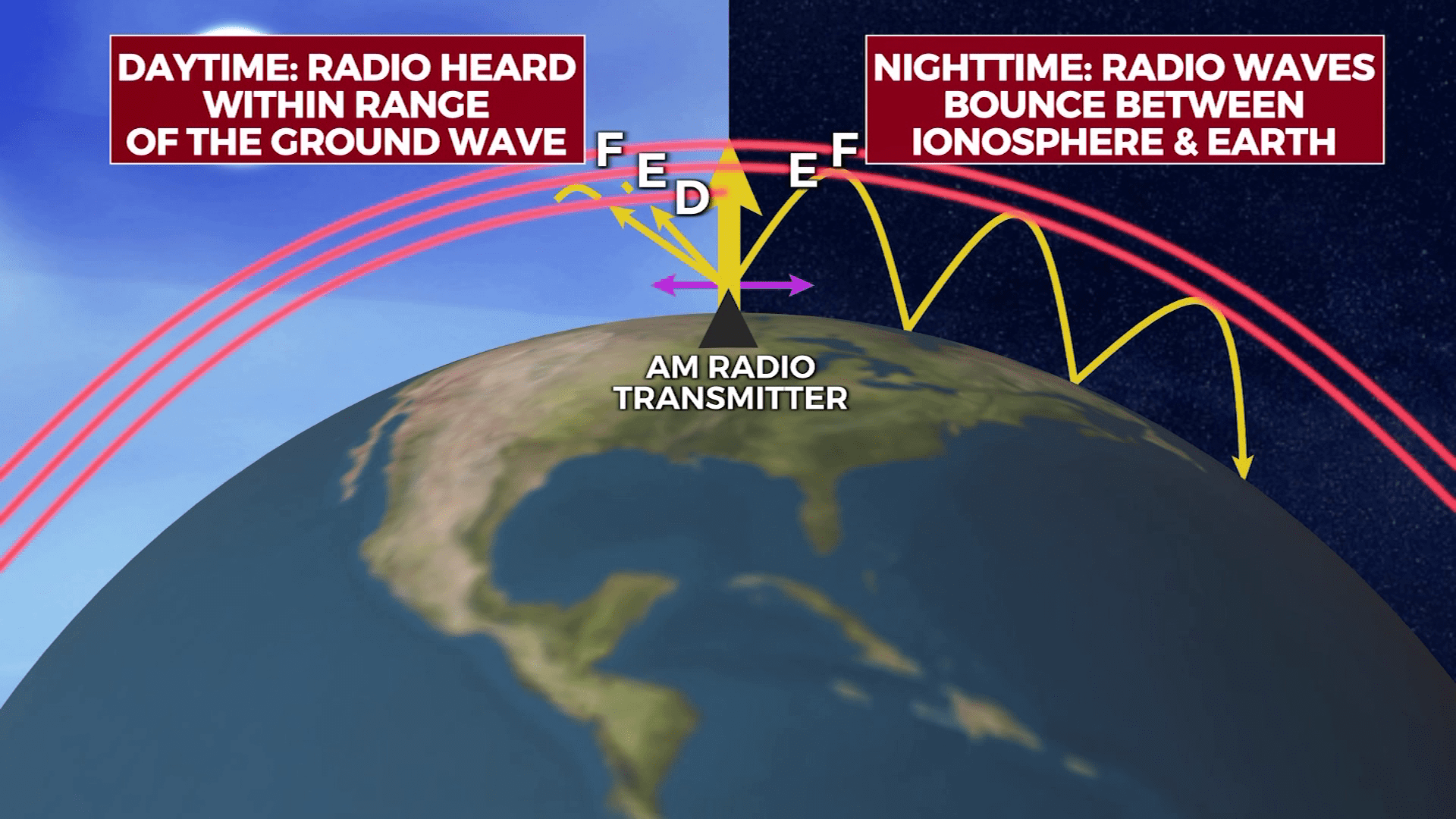Weatherz School: The skip & AM radio
[anvplayer video=”5159273″ station=”998130″]
At night, you can listen to AM radio from stations on the other side of the country. To find out why, we need to look high into the atmosphere.
Not all radio waves travel farther at night than during the day. AM radio signals can in the right conditions because of their relationship with the ionosphere.
The ionosphere is a layer in the atmosphere roughly between 50 and 400 miles above the surface. This layer is ionized by radiation from the sun, which is where the name comes from. At night, we remove the sun from the equation.
Without solar radiation, the ionosphere becomes thinner. The lowest level of the ionosphere, the D layer, disappears. In the daytime, the D layer absorbs AM radio signals, and the radio can only be heard within range of the ground wave.
At night, the AM waves can bounce back and forth between the ionosphere and the earth, traveling thousands of miles. This is called sky wave propagation. It’s often referred to as “the skip.”

AM radio waves travel further at night when a layer of the ionosphere disappears
Because of the skip phenomenon, if all AM stations operated the same at night as they did during the day, there would be massive interference of radio signals.
That’s why most AM stations either cease transmission at sunset or reduce their power. The stations with clearance to keep transmitting overnight are the ones you can pick up.